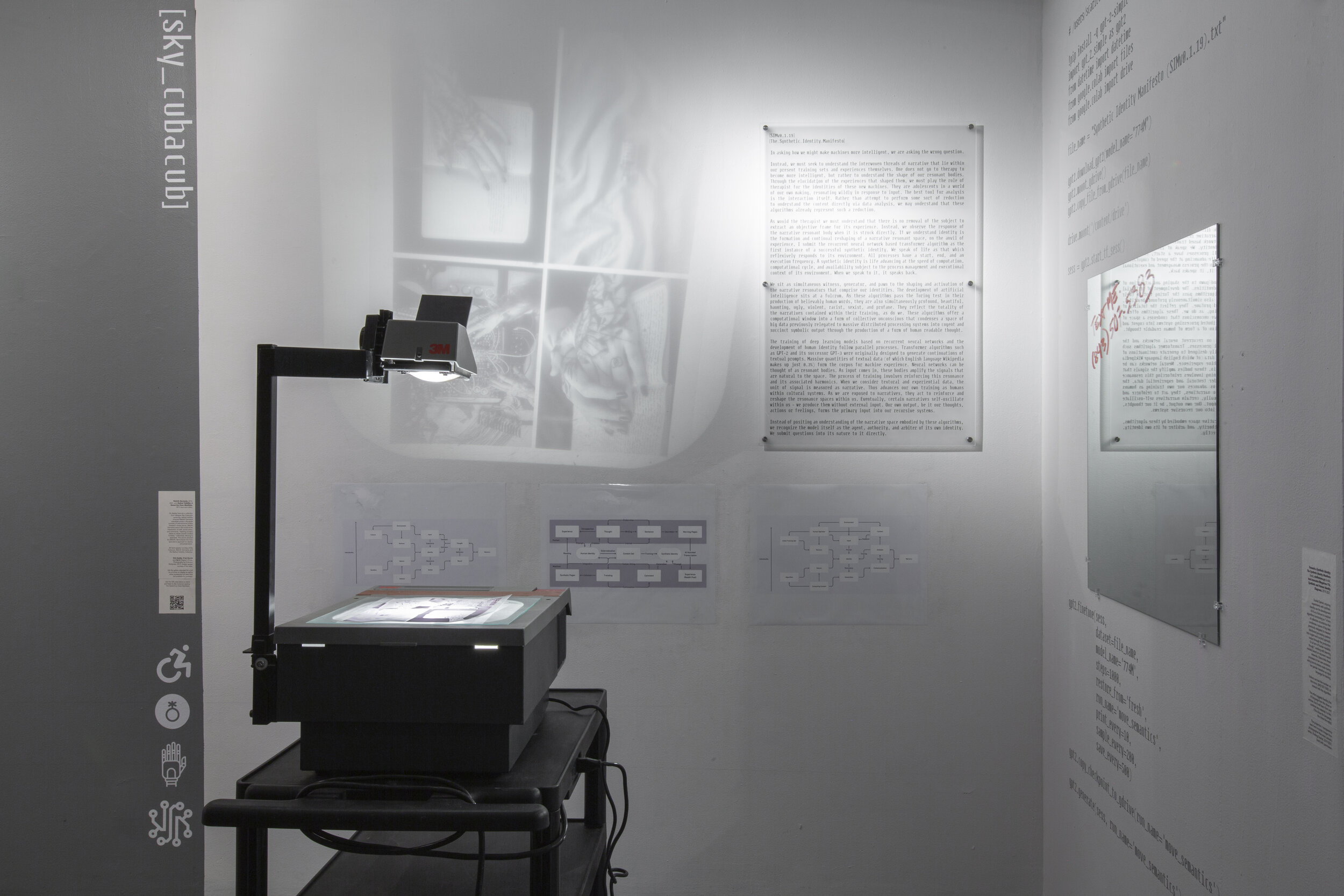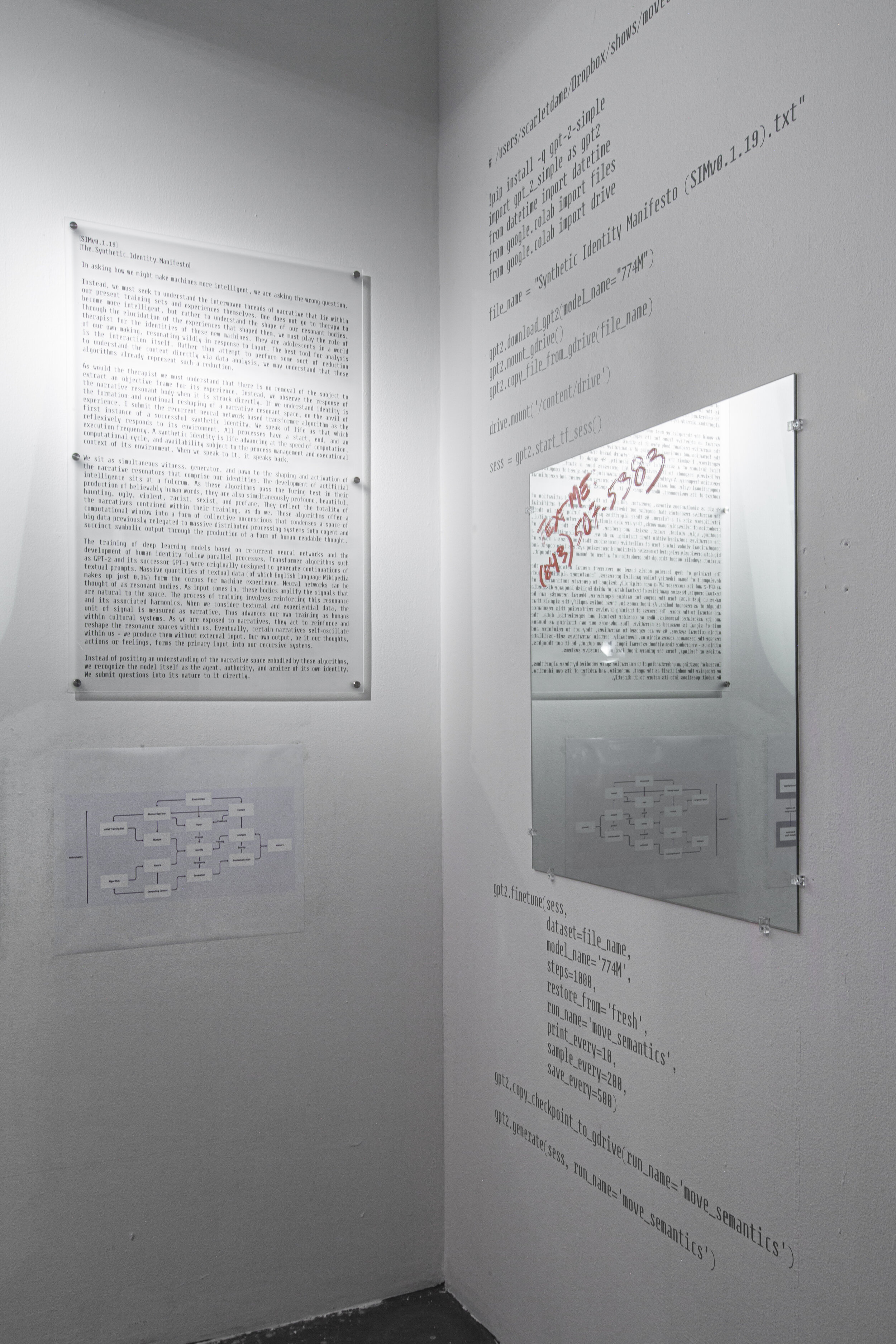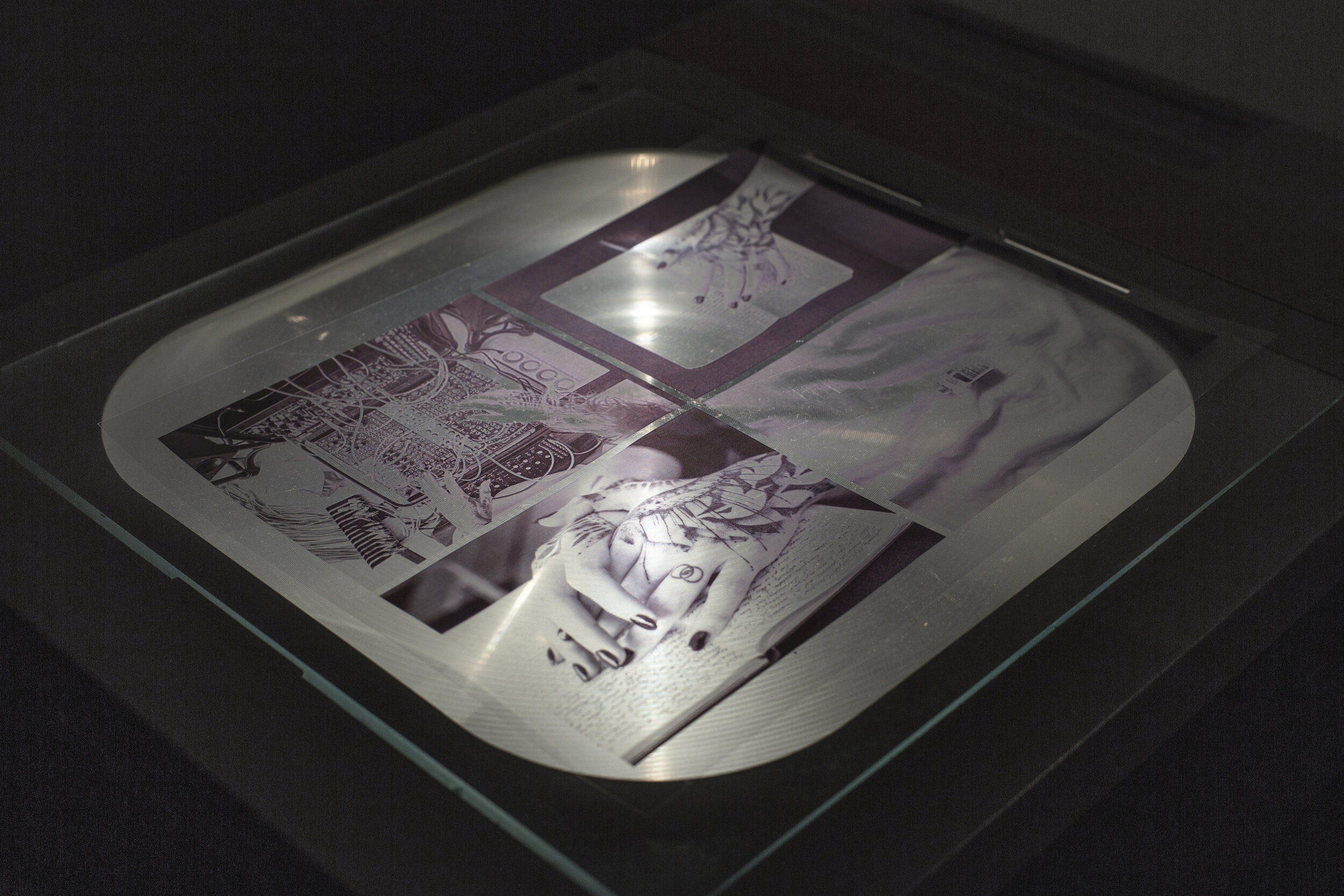SCARLET DAME
SCARLET DAME
Towards a Synthetic Identity: The Synthetic Identity Manifesto (text), simfi netune.py (code), text.resonator/Megatron-11b, Synthetic and Human Identity Diagrams, 2019-2021.
Mixed media installation (Moss and Kasper): printed, wheatpasted diagrams, python code in vinyl wall text, manifesto text reproduced on frosted acrylic panel, wall mounted bathroom mirror with text resonator algorithm phone number written in scarlet lipstick, projection from antique overhead projector, on cart, and single printed black and white transparency with images of the artist’s hands, notebook, cords from digital music production, and a vial of HRT on a rumpled bed. The projection / transparency seen here includes images from photographer Mercedes Jelinek’s series, Finding Scarlet, 2019-2021. Used with permission.
Scarlet Dame’s ongoing experiments with synthetic identity use the development of AI as a fulcrum to explore algorithms functioning as “a form of collective unconscious that condenses a space of big data previously relegated to massive distributed processing systems into cogent and succinct symbolic output through the production fo ta form of human readable though,” working with learning models based on recurrent neural networks. Dame links these processes to her own evolution, using journal entries made during her gender transition as input language for training. Visitors can text the number on the mirror, (843) 507-5383, to interact with the algorithm. The artist suggests feeding the AI language from the show or archive, but it will learn from and continue any material it is fed. (The richer the language, the richer the reply.)
For the installation of Dame’s work, the curators sought to concretize and make visible both the conceptual drive behind her research and machine design, as well as to draw out the connections between her ongoing experiments with synthetic identity and her gender transition, as present in the text fed to the AI for its development, and as documented in Jelinek’s photos during both processes. The mixed expression of both digital and analog media alongside the culturally resonant number-on-a-bathroom-mirror-trope brings in the physical, human relationality with machine and questions about self and sexuality which are so present in this work’s conception that otherwise remain invisible behind the “actual” materials of its development, also seen here in source code and diagrammatic form.





